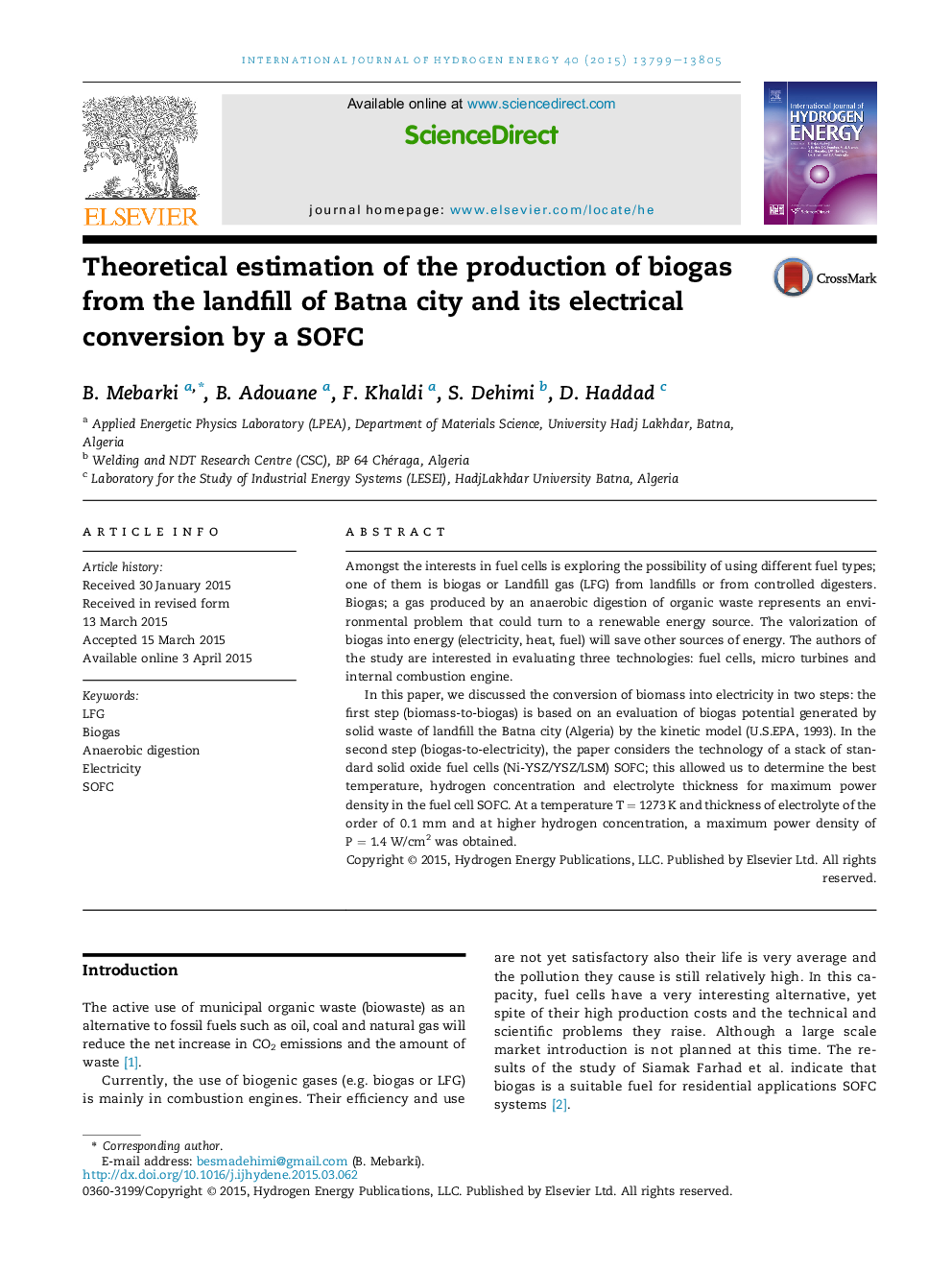| کد مقاله | کد نشریه | سال انتشار | مقاله انگلیسی | نسخه تمام متن |
|---|---|---|---|---|
| 1274673 | 1497434 | 2015 | 7 صفحه PDF | دانلود رایگان |

• Theoretical estimation of biogas through the biomass.
• Electrical conversion of biogas by the SOFC.
• Best conditions to achieve maximum power density.
Amongst the interests in fuel cells is exploring the possibility of using different fuel types; one of them is biogas or Landfill gas (LFG) from landfills or from controlled digesters. Biogas; a gas produced by an anaerobic digestion of organic waste represents an environmental problem that could turn to a renewable energy source. The valorization of biogas into energy (electricity, heat, fuel) will save other sources of energy. The authors of the study are interested in evaluating three technologies: fuel cells, micro turbines and internal combustion engine.In this paper, we discussed the conversion of biomass into electricity in two steps: the first step (biomass-to-biogas) is based on an evaluation of biogas potential generated by solid waste of landfill the Batna city (Algeria) by the kinetic model (U.S.EPA, 1993). In the second step (biogas-to-electricity), the paper considers the technology of a stack of standard solid oxide fuel cells (Ni-YSZ/YSZ/LSM) SOFC; this allowed us to determine the best temperature, hydrogen concentration and electrolyte thickness for maximum power density in the fuel cell SOFC. At a temperature T = 1273 K and thickness of electrolyte of the order of 0.1 mm and at higher hydrogen concentration, a maximum power density of P = 1.4 W/cm2 was obtained.
Journal: International Journal of Hydrogen Energy - Volume 40, Issue 39, 19 October 2015, Pages 13799–13805